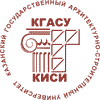About the authors
| First name, Middle name, Last name, Scientific degree, Scientific rank, Current position. Full and brief name of the organization, The organization address. | Niyaz R. Sirazeev, Masters Student, Saint Petersburg State University of Architecture and Civil Engineering, Saint Petersburg, Russian Federation E-mail: This e-mail address is being protected from spambots. You need JavaScript enabled to view it , ORCID: 0009-0003-4970-3137 Evgeniya Yu. Shuvaeva, Candidate of Architecture, Associate Professor, Saint Petersburg State University of Architecture and Civil Engineering, Saint Petersburg, Russian Federation E-mail: This e-mail address is being protected from spambots. You need JavaScript enabled to view it , ORCID: 0000-0002-4337-4171 |
| Title of the article | Typology of historical gymnasiums in Saint Petersburg based on the volumetric and planning characteristics |
| Abstract. | Problem statement. Historical gymnasiums constitute an important layer of St. Petersburgs architectural heritage, being an integral part of its historical and socially significant infrastructure. The study of the typological features of historical educational institutions provides a theoretical basis for scientific and design rationale for the modernization of such facilities, and also complements the overall picture of the pre-modern construction tradition. This paper attempts to typologize the historical gymnasiums of St. Petersburg based on their volumetric and planning patterns. The study aims to identify the planning and spatial-morphological characteristics of historical gymnasiums in St. Petersburg, analyze the stages of their infrastructure development, and determine their role in the urban fabric. Results. The study examined the construction chronology of the objects, taking into account their interaction with the evolving urban planning situation, and analyzed the layouts of the gymnasiums. It was found that the formation of St. Petersburg gymnasium infrastructure included the adaptation of existing buildings before the principles for specialized school construction were formulated. The analysis of the volumetric and planning patterns allowed for the differentiation of the entire array of St. Petersburg gymnasiums into four groups, with the exception of one instance that did not fit into the general typology. It should be noted that the evolution of the studied design solutions reflected the perception of gymnasiums as significant civil facilities. As part of the research, it was important to refer to the legal documents that determined the development of school construction. Conclusions. By the end of the 19th century, St. Petersburg was dominated by high-quality gymnasium architecture, which was largely in line with modern ideas about specialized school spaces. The buildings from this era have significant potential to support educational functions. |
| Keywords. | historical gymnasiums in St. Petersburg, gymnasium infrastructure, service system, network of educational institutions, volumetric and planning structure, campus, boarding house, dormitory, and floor-by-floor zoning scheme |
| For citations: | Sirazeev N.R., Shuvaeva E.Yu. Typology of historical gymnasiums in Saint Petersburg based on the volumetric and planning characteristics// News of KSUAE, 2025, № 3 (73), p. 233-250, DOI: 10.48612/NewsKSUAE/73.19, EDN: TDNAHP Typology of historical gymnasiums in Saint Petersburg based on the volumetric and planning characteristics// News of KSUAE, 2025, № 3 (73), p. 233-250, DOI: 10.48612/NewsKSUAE/73.19, EDN: TDNAHP |
















